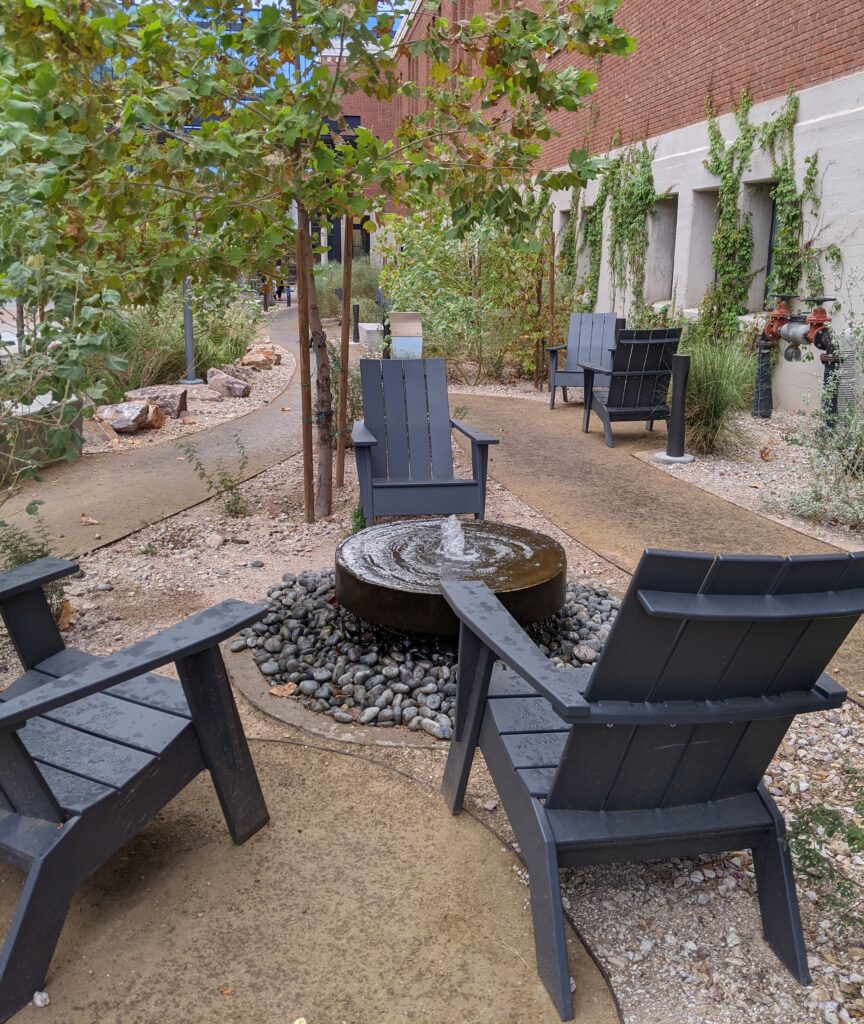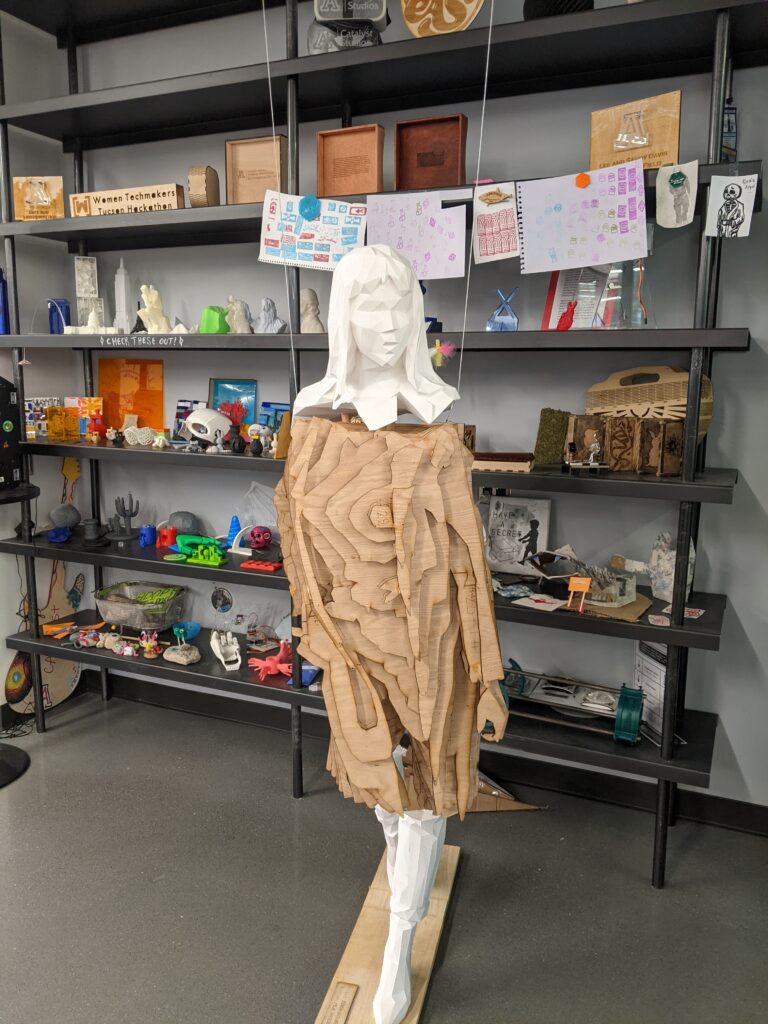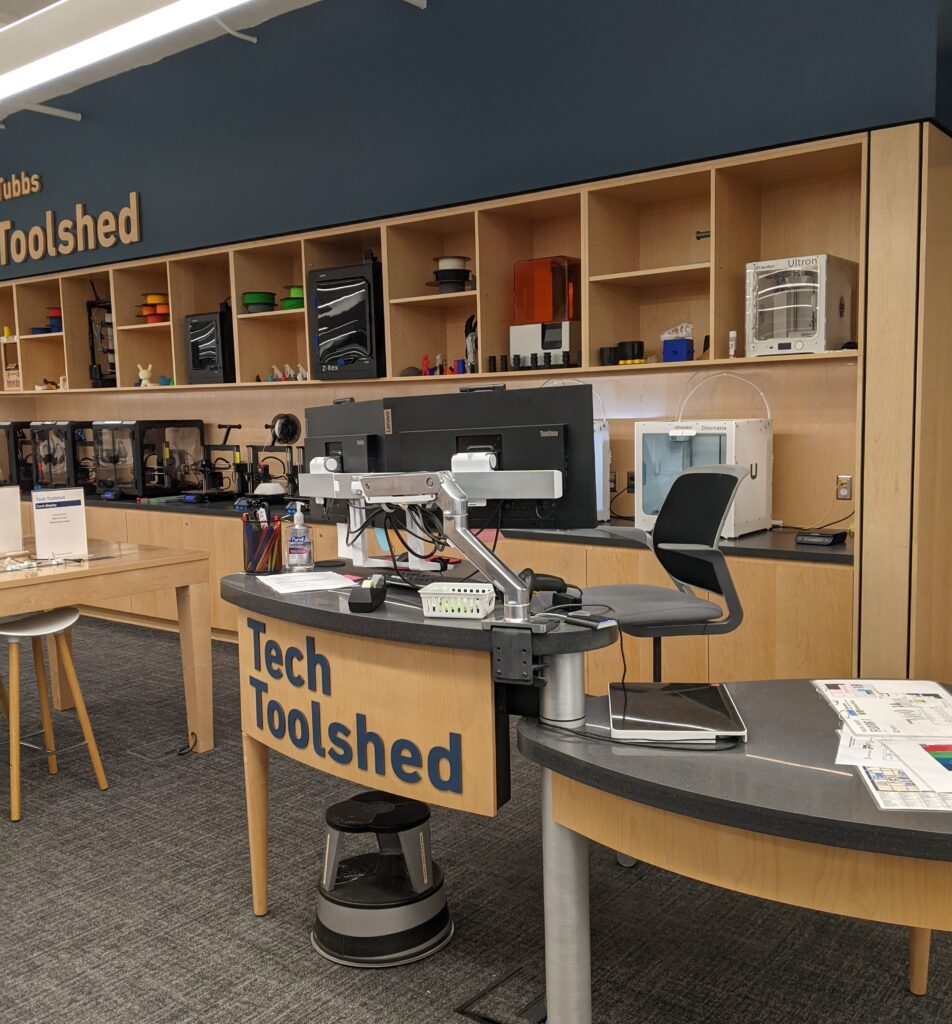The ways in which we use libraries is changing. How we conduct research. How we use (and don’t use) print collections to seek information. How we design our physical spaces to welcome students and create a sense of belonging for diverse communities. A theme throughout the Designing Libraries conference last week was how situating services and spaces together and creating unexpected aesthetic experiences provide for both convenience and a welcoming environment for students today. Browsing the book stacks is no longer what drives traffic to the library.
The conference was held at the University of Arizona’s sprawling Tucson campus. Imagine a Student Success District comprised of three adjacent buildings over nine acres! (Well, space is different in the West).

Designing the exterior landscape that connects those buildings presented many engineering and aesthetic challenges, according to keynote speaker Christine Ten Eyck. In Tucson, providing for shade is necessary and the plants must be able to thrive in the hot, arid climate. With little maintenance. The landscape design is inspired by the city’s surrounding arroyo’s – meandering paths for waterflow, here providing for an urban oasis that attracts both students and wildlife. Ten Eyck’s themes of aesthetics and nature ran throughout the conference. Others spoke to how outdoor landscaping and indoor plants contribute to students’ sense of well-being.
Another example of situating aesthetics in new ways to support student wellness and belonging is the Artist in Residence Program at Geogia Tech. This is a school that is predominantly graduate level STEM (Science, Technology, Engineering & Mat) – disciplines not frequently associated with the arts. Artist residents are asked to engage the community in an artistic and aesthetic exploration of the role of the libraries in society. The project, now in its third year, supports artists, and as importantly, engages students in an experience that encourages them to think about art in new ways.
A centerpiece for the conference was the University’s Student Success District. The main library is part of the district alongside technology help (and lending), career services, academic support and tutoring, study rooms, a data visualization lab and a space for makers.


While the luxury of space provided by three buildings is not something we all can afford, the Success District demonstrates also creative thinking and attention to student needs made possible by collaboration between multiple administrative organizations. These services are not all under the control of the library! But the shared goal of providing a welcoming space for students that supports their learning in a variety of ways – that can be replicated by all of us.
The convenience and ready access to a variety of services is not limited to books, technology or academic support. Food is at the ready too, with these darling robots that travel autonomously throughout campus to deliver food and drink. A service that works better when there is sunshine 350 days out of the year.

